
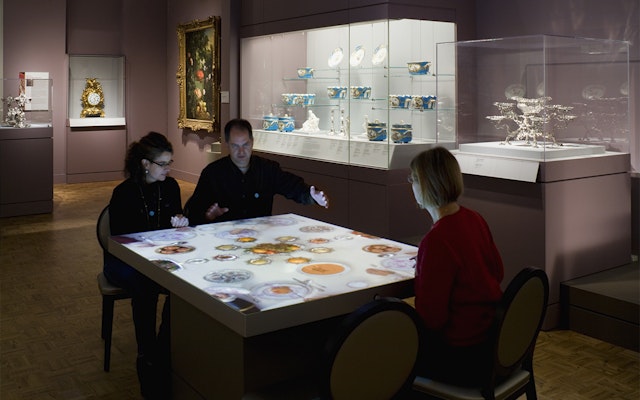
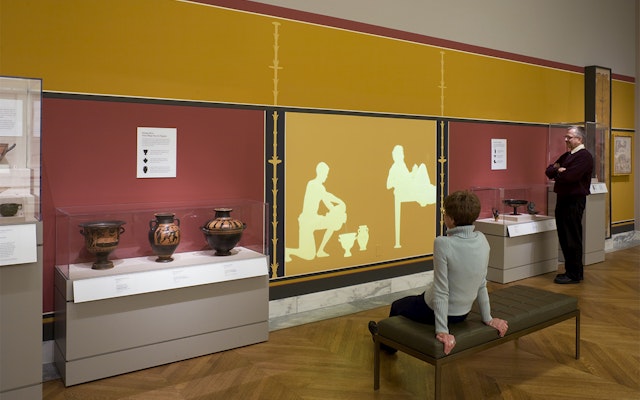

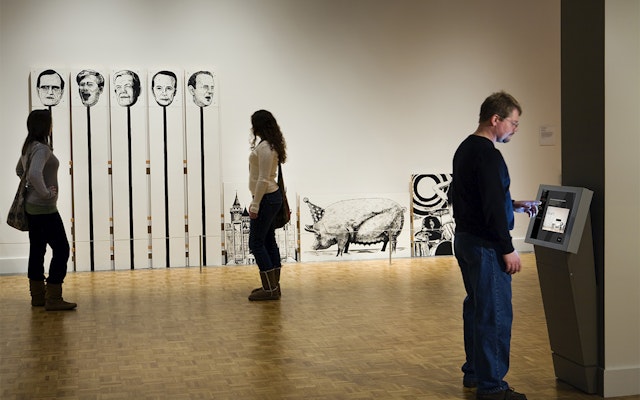
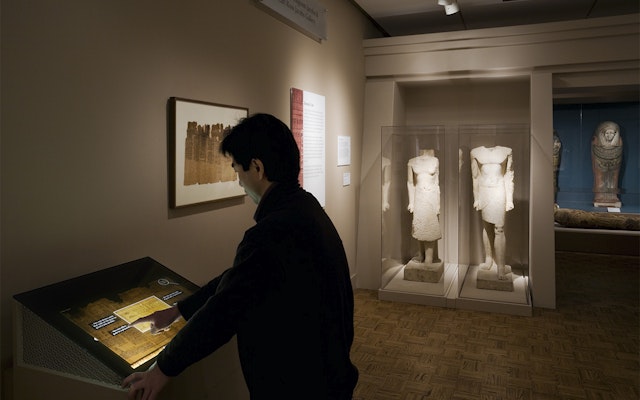
In response to the difficult challenges book display poses for museums, and in reaction to the traditional solution of opening a book to a specific page and encasing it under glass, the designers created three innovative interactive rear-projection digital book kiosks.
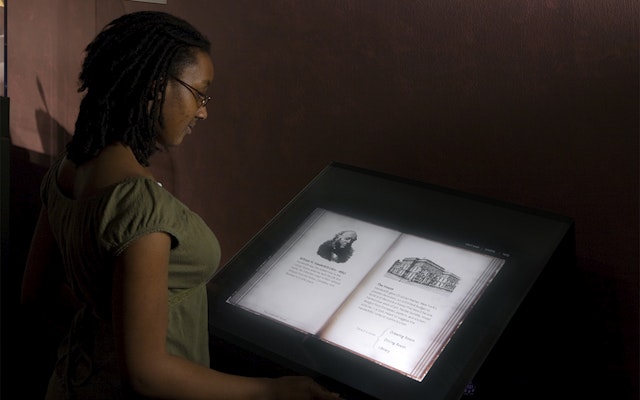


Founded in 1885, the Detroit Institute of Arts underwent an extensive six year, $158 million renovation that sought, among other things, to rethink the display of the museum’s permanent collection. As part of the renovation, Pentagram worked with the museum's education and interpretation department to develop a suite of permanent media-based interactive exhibitions that would help make the collection more accessible through the use of technology.
Lead by Michael Graves, DIA's renovation added 58,000 square feet to the museum’s already impressive 600,000. DIA's mission was to “make sense” of the pre-existing building's confusing floor plan by re-organizing the interior space, while it also attempted to rethink the display of the museum’s permanent collection. As a result, DIA’s extensive holdings of over 60,000 objects have been re-organized by theme, as opposed to period or medium, thus making them more accessible to the visitor.
A fundamental part of the renovation was to renew the museum’s commitment to creating an engaging visitor experience, and the use of technology was seen as an important component of this mission. In tandem, central to Pentagram's strategy is the “ECR” visitor experience model adopted from Microsoft research director, Curtis Wong. ECR stands for engagement, context and reference. This interactive media strategy would be appropriate for science, cultural, and children's museums, but not an obvious choice for museums of art. Utilizing this ECR visitors' experience model, the design team and the museum created the interactive installations that include three digital book kiosks in the Egyptian, Medieval and American decorative art galleries; three life-size, rear-projected films in the African, eighteenth-century decorative art, and ancient Greek and Roman galleries; a series of projected interpretive captions in the modern galleries; and an immersive sound installation in the eighteenth-century Kanzler drawing room.
In an effort to bring DIA’s collection of eighteenth-century French porcelain and silver to life, the team created the interactive installation Art of Dining in the museum's gallery of eighteenth-century decorative arts. Through an elaborate overhead video projection, filmed at Pentagram's New York office with objects on loan from the museum and with the help of Pentagram's favorite chef/food stylist Anne Ferril, visitors to the museum’s decorative arts gallery sit at a table onto which is projected an aristocratic dinner service. Visitors feel like they are participating in the dinner as three courses of historically accurate food are served using porcelain and silver on display within the gallery itself. The installation includes a sound recording of native French speakers that adds an air of authenticity to the experience.
The team also created Antiquities Silhouette, a three-minute animated film that brings to life the ritual of Roman wine drinking. Projected on a wall of the antiquities gallery, the film depicts the mixing and serving of wine, while it highlights the vessels on display to the left and right of the projection. The human silhouettes in the film were also taken from these vessels and bring the gallery to life by creating a unique interactive experience between the viewer, the film and the objects in the museum’s permanent collection.
While developing the interactive media, the designers was guided by three principles. First, the art is sacred and the technology should never be the first thing you see in the gallery. Second, the entire gallery should support the interpretation. Lastly, the interpretation should encourage visitors to look back at the art.
In response to the difficult challenges book display poses for museums, and in reaction to the traditional solution of opening a book to a specific page and encasing it under glass, the designers created three innovative interactive rear-projection digital book kiosks. Unlike typical touch screen kiosks, these are rear-projected onto glass, giving an appealing glow-effect that can't be achieved with simple touch screen LCDs. These kiosks not only allow viewers to “flip” through the pages of a book, but provide translations and explanatory information as well. Chosen from the museum’s collection to be represented in this innovative format were an Egyptian Book of the Dead, a sixteenth century Book of Hours, and Artistic Houses, a rare picture book of famous interiors such as the Vanderbilt House and Louis C. Tiffany’s apartment, published by subscription in 1883.
Other installations include Art of African Masquerade, a life-size, rear-projected film in the African gallery and Dynamic Captions, a series of interpretive captions in the modern galleries, and an interactive response station in the contemporary art galleries.
Sector
- Arts & Culture
Discipline
- Digital Experiences
- Exhibitions
Office
- New York
